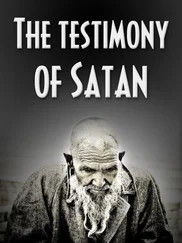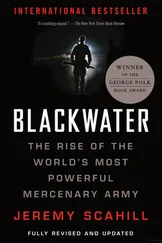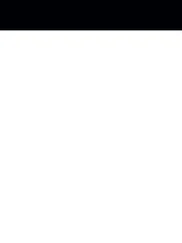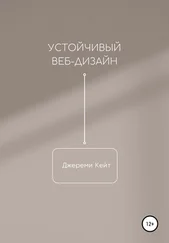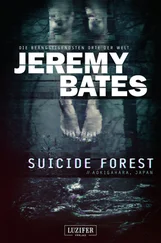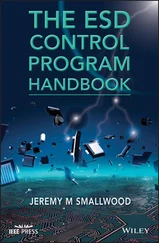Beginning in 2002 and into 2003, Special Ops and CIA units in Afghanistan began shifting their resources to Iraq. By the time it was disbanded in 2003, TF-5 in Afghanistan had already lost “more than two-thirds of its fighting strength,” from about 150 commandos to as few as thirty. By the winter of 2003, it was reported that “nearly half the US intelligence and commando agents who had been in Afghanistan and neighboring Pakistan were reassigned to Iraq.” Saddam was code-named Black List One, and McRaven’s force intensified the hunt, scouring Iraq for him. They yanked family members, former bodyguards and aides of Saddam from their homes or hiding places and pressed them for information on his whereabouts. By late 2003, the US military’s conventional commanders were growing concerned about the techniques they heard were being used by TF-121 to interrogate prisoners. It sounded a lot like the descriptions they had heard in whispers about what the CIA was doing at its black sites. “Detainees captured by TF 121 have shown injuries that caused examining medical personnel to note that ‘detainee shows signs of having been beaten,’” according to a classified military report prepared for top US generals in Iraq at the time. One officer was quoted in the report as saying, “Everyone knows about it.” The report alleged that some of the treatment of detainees by TF-121 could “technically” be illegal and gravely warned that the mass detention of Iraqis could fan the flames of a brewing insurgency, adding that Iraqis could perceive the United States and its allies as “gratuitous enemies.”
But, just as the military was uncovering a potentially illegal and counterproductive detention program being run by TF-121, the task force achieved a major victory that would grab international headlines and win much internal praise in the Pentagon. A former bodyguard captured and interrogated by the task force had given up the location of a farm outside of Saddam’s hometown, Tikrit, which he claimed the deposed Iraqi leader used as a hiding place. McRaven’s men, backed by scores of troops from the 4th Infantry Division and local Iraqi militiamen, descended on the farm after cutting off all of its electricity, causing it to go completely dark. After searching the buildings on the property, they were just about to give up when a soldier spotted a crack in the floor, partially covered by a rug. Underneath, they found a styrofoam plate concealing a hole.
ON DECEMBER 14, 2003, it seemed to the Bush administration that the Iraq War had an end—and victory—in sight. That morning, Paul Bremer, flanked by General Ricardo Sanchez, walked up to a podium at a press conference in Baghdad. “Ladies and gentlemen, we got him,” Bremer said, barely able to contain his smile. The “him” in this case was none other than Saddam Hussein. The deposed Iraqi leader had been found hiding in a “spider hole” inside a mud brick hovel at the farm in Adwar, near Tikrit, with a pistol. They also recovered some AKs and $750,000 in hundred-dollar bills on the farm. When a member of Delta Force spotted Saddam hiding in the hole, the Iraqi leader told him: “I am Saddam Hussein. I am the president of Iraq. I want to negotiate.” The soldier reportedly shot back, “President Bush sends his regards.” Moments later, McRaven’s men were whisking him to a JSOC filtration site, a temporary holding facility, near the Baghdad Airport. It was called Camp NAMA. Ironically, the facility that would become Saddam’s temporary home had once served as one of his torture chambers. The media was shown images of Saddam being given a medical exam at the facility, but JSOC had already been putting it to much darker uses that would never make it onto TV.
“Now it is time to look to the future, to your future of hope, to a future of reconciliation. Iraq’s future, your future, has never been more full of hope. The tyrant is a prisoner,” Bremer confidently declared. “The economy is moving forward. You have before you the prospect of a sovereign government in a few months.” General Sanchez said the operation was a team effort, involving “coalition special operations forces,” but JSOC and its commanders were not given any direct credit. Neither McChrystal nor McRaven were at the podium that day, but people in the Special Ops community say that McRaven coordinated “Operation Red Dawn.” McRaven and Assistant Secretary of Defense Thomas O’Connell, a veteran of the Activity, shared a cigar outside of Saddam’s cell soon after the Iraqi leader’s capture. Rumsfeld announced that he believed “the eight-month-long insurgency might begin to run out of gas.” In reality, the war was just beginning, particularly for McChrystal and McRaven. And the CIA knew it.
“We are seeing the establishment of an insurgency in Iraq,” Robert Richer, the head of the CIA Near East Division, had told Bush during an intelligence briefing in late 2003. “That’s a strong word,” Rumsfeld interjected. “What do you mean? How do you define insurgency?” When Richer explained what he meant, Rumsfeld quipped, “I might disagree with you.” Finally, Bush weighed in. “I don’t want to read in the New York Times that we are facing an insurgency,” he declared. “I don’t want anyone in the cabinet to say it is an insurgency. I don’t think we are there yet.” Despite the state of denial that Rumsfeld appeared to embrace, Richer was right. Iraq, which had no ties to al Qaeda or 9/11, was becoming a magnet for jihadist groups wanting to fight—and kill—Americans.
Although much lip service was paid during the ensuing period to the presence of al Qaeda in Iraq, it was seldom pointed out that the foreign fighters came because of the US invasion. If anything, Saddam’s regime and al Qaeda were enemies. And though there was undoubtedly an al Qaeda presence after the March 2003 invasion, Zarqawi and AQI, or al Qaeda in Iraq, represented a tiny portion of those attacking US occupation forces. There were disparate militias, unemployed Iraqi Army units, Shiite guerrillas and various political factions vying for local power, all of which were rising against the United States. American attacks, such as the siege of Fallujah in April 2004 and a shootout in the Shiite holy city of Najaf, combined with the broader war against the popular cleric Moqtada al Sadr, were swelling the ranks of the insurgency. Despite all the talk of sharp sectarian divides in Iraq, the US occupation was actually uniting Iraqis, Shiite and Sunni, in a common cause against their occupiers. The United States should have realized early on that its own disastrous policies were driving the chaos in Iraq. But the US war planners were intent on planting the flag of victory in Iraq by force, and that meant the insurgency had to be crushed and its leaders killed or captured. “We had this assumption that, okay, you’ve got this group of dead-enders, so to speak, and that if you capture Saddam Hussein, if you are able to capture or kill his sons, then you can more or less deflate the insurgency,” recalled Exum, the Army Ranger. “We were so focused on getting these high value targets, quite independent of any larger or any broader strategy for how we were going to pacify Iraq. I think we ended up exacerbating a lot of the drivers of conflict and exacerbating the insurgency.”
There were two wars in Iraq. One being waged by the conventional army, which was largely an occupation; the other was a war of attrition being fought by JSOC. McChrystal’s men did not believe in taking orders from conventional commanders. General Sanchez, who from 2003 to 2004 was the top commander in Iraq, told me that JSOC forces would barely give his command the courtesy of informing his office of when they were going to conduct operations, even in areas where the conventional US forces were holding territory. When they did, he said, it was just to alert the conventional forces that they’d be doing a hit and to have his men stand clear. Exum recalled of the JSOC relationship with the conventional military: “Lord knows we were depending on those guys for Medivac and for Quick Reaction Force if things got really bad, but we weren’t really talking to them, at the command level.” The task force’s operations, Exum said, were “very compartmentalized, very stove-piped.” JSOC was creating a system where its intelligence operations were feeding its action and often that intelligence would not be vetted by anyone outside of the JSOC structure. The priority was to keep hitting targets. “The most serious thing is the abuse of power that that allows you to do,” said Wilkerson, the former chief of staff to Powell. He continued:
Читать дальше




